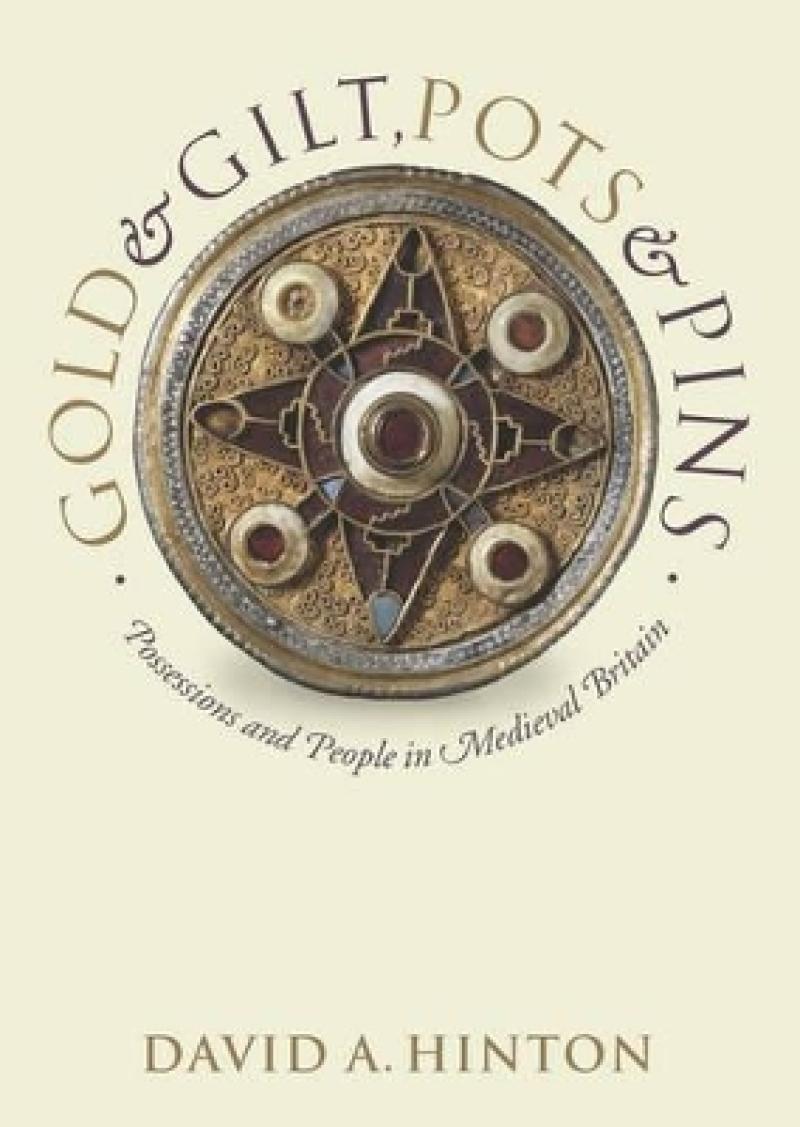Rich in descriptive detail, it offers a much needed synthesis, relating objects to their social context period by period.
C.P Lewis, Annual Bulletin of Historical Literature
Though this book is innovative for it's "big picture" approach, its value as a detailed reference work for anyone working on medieval clothing and textiles of the British Isles cannot be overstated.
Medieval Clothing and Textiles
In medieval Britain people wore jewellery made of gold if they were rich, of base metal if they were poor; they might hoard their property, or give it away to guarantee that they would have friends when needed; and many of them paid tax on their possessions. In Gold and Gilt, Pots and Pins, David Hinton reviews the significance of artefacts in this period. From elaborate gold jewellery to clay pots, he looks at what possessions meant to people at every level of society. His emphasis is on their reasons for acquiring, keeping, displaying, and disposing of the things that they wore and had in their houses.
Drawing on a wide range of physical and documentary evidence, including objects from archaeological excavations and written sources, he argues that the significance of material culture has not been properly taken into account in explanations of social change, particularly in the later Middle Ages. He also explores how identity was created, and how social division was expressed and reinforced.
An overall review that looks at evidence in Scotland and Wales as well as in England, this book ranges chronologically from the end of the Roman rule of Britain to the introduction of the new modes and practices that are usually termed 'Renaissance', marked by the changes in religion. Profusely illustrated, the author provides a fascinating and illuminating window into the society of the Middle Ages.
Les mer
Looks at what possessions meant to people at every level of society in Britain in the middle ages, from elaborate gold jewellery to clay pots. Drawing on a range of physical and documentary evidence, this book places emphasis on their reasons for acquiring, keeping, displaying, and disposing of the things that they wore and had in their houses.
Les mer
Introduction ; 1. Adapting to Life without the Legions ; 2. Expressions of the Elites ; 3. Kings and Christianity ; 4. Alfred et al ; 5. An Epoch of New Dynasties ; 6. Feudal Modes ; 7. Material Culture and Social Display ; 8. The Wars and the Posies ; Bibliography ; Index ; Introduction ; 1. Adapting to Life without the Legions ; 2. Expressions of the Elites ; 3. Kings and Christianity ; 4. Alfred et al ; 5. An Epoch of New Dynasties ; 6. Feudal Modes ; 7. Material Culture and Social Display ; 8. The Wars and the Posies ; Bibliography ; Index
Les mer
`Review from previous edition This book is an excellent example of deep learning worn lightly and well communicated.'
Kevin Leahy, TLS
`Offers an illuminating window... through the artefacts that survive, and which once belonged to people at every level of society.'
History Today
`Professor Hinton has written an exceptionally learned and original book...a first-class piece of work.'
J.R. Maddicott, The English Historical Review
Les mer
Hundreds of examples of archaeological finds, large and small, grand and commonplace
Explains what the artefacts tell us about ordinary people's lives
Covers a wide time-span, from the end of Roman rule to the dawn of the Renaissance
Highly illustrated
Les mer
Hundreds of examples of archaeological finds, large and small, grand and commonplace
Explains what the artefacts tell us about ordinary people's lives
Covers a wide time-span, from the end of Roman rule to the dawn of the Renaissance
Highly illustrated
Les mer
Produktdetaljer
ISBN
9780199264544
Publisert
2006
Utgiver
Vendor
Oxford University Press
Vekt
889 gr
Høyde
237 mm
Bredde
165 mm
Dybde
25 mm
Aldersnivå
G, 01
Språk
Product language
Engelsk
Format
Product format
Heftet
Antall sider
460
Forfatter
